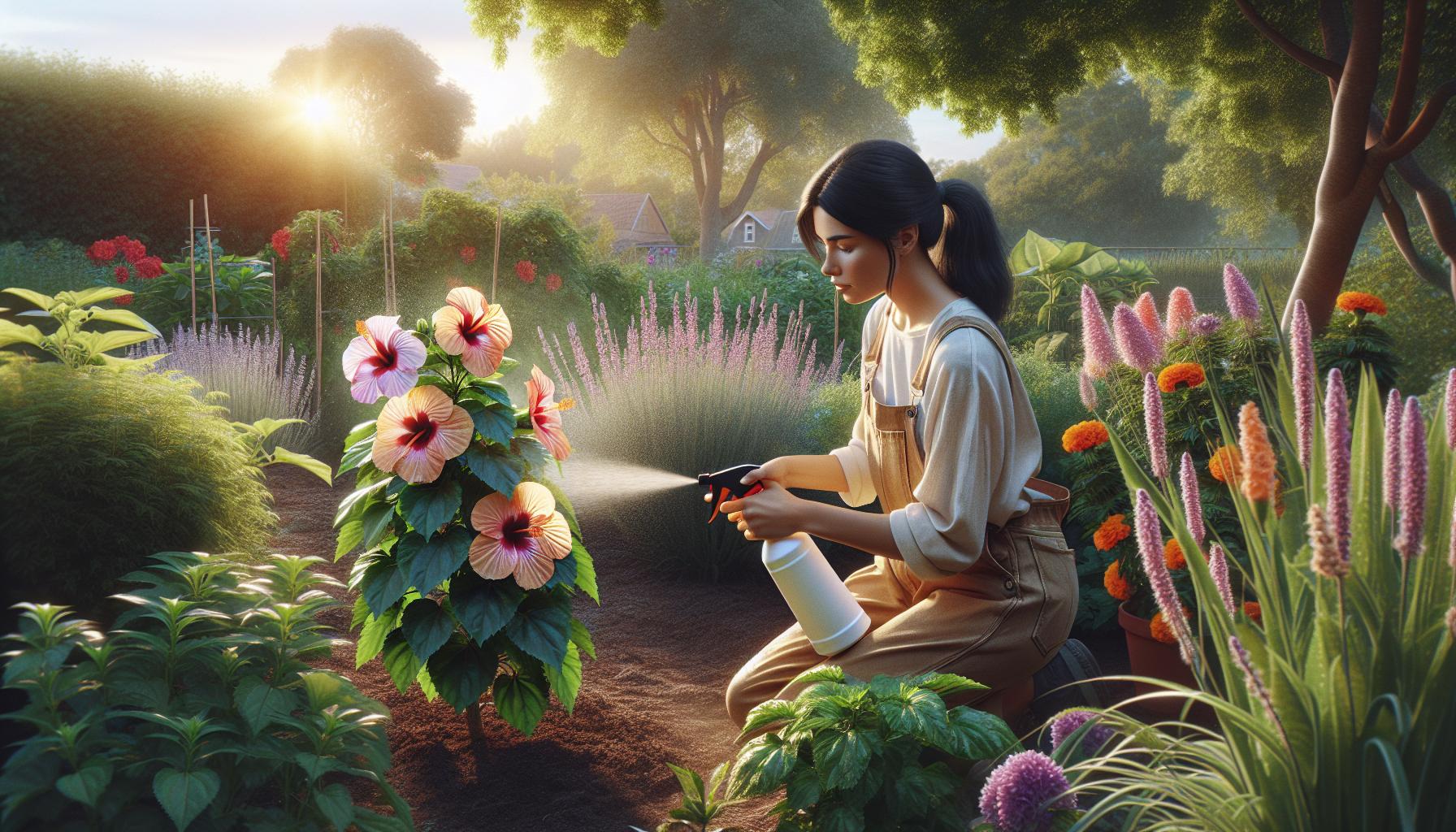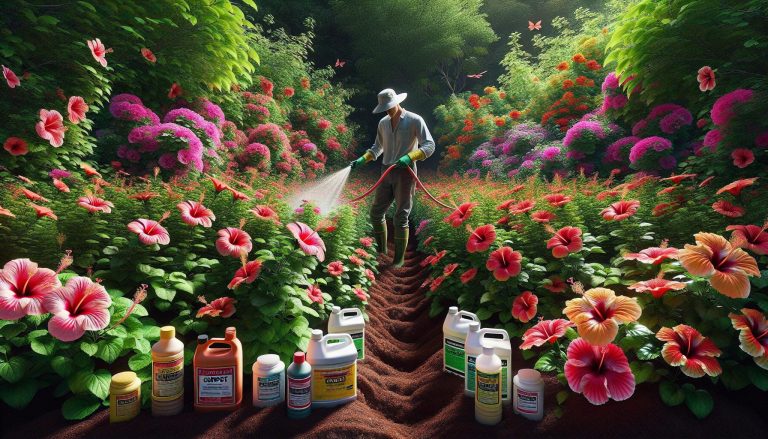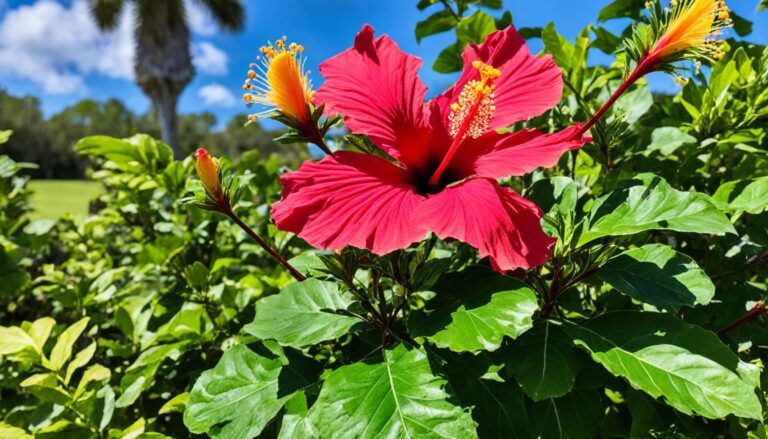Bug Spray for Hibiscus: Protect Your Plants from Pests Safely and Effectively
As a passionate gardener, I’ve faced my share of challenges, but few are as frustrating as pesky bugs attacking my beloved hibiscus plants. These vibrant beauties can quickly become a feast for various insects, leaving their leaves tattered and blooms compromised. But don’t worry – there’s hope!
Did you know that not all bug sprays are created equal when it comes to protecting hibiscus? I’ve learned through trial and error that finding the right solution is crucial for maintaining healthy, thriving plants. In this article, I’ll share my insights on the most effective bug sprays for hibiscus, helping you keep your garden gorgeous and pest-free. Ready to say goodbye to those unwanted garden guests?
Understanding Common Pests That Affect Hibiscus
Hibiscus plants attract various pests that can harm their health and appearance. Identifying these insects and understanding their impact is crucial for effective pest management. Let’s explore the common culprits and their effects on hibiscus plants.
Identifying Hibiscus-Specific Insects
Hibiscus plants are prone to infestations from several insects:
- Aphids: Tiny, pear-shaped insects that cluster on new growth
- Spider mites: Microscopic arachnids that cause stippling on leaves
- Whiteflies: Small, white, winged insects found on leaf undersides
- Mealybugs: Cotton-like pests that congregate in leaf axils
- Thrips: Slender insects that damage flower buds and leaves
To spot these pests, inspect your hibiscus regularly. Look for:
- Discolored or distorted leaves
- Sticky residue on leaves (honeydew)
- Webbing between leaves and stems
- Stunted growth or wilting
Early detection is key to preventing widespread infestations and maintaining plant health.
Impact of Pests on Hibiscus Health
Pest infestations can severely affect hibiscus plants:
- Nutrient depletion: Sap-sucking insects rob plants of vital nutrients
- Reduced photosynthesis: Damaged leaves can’t produce energy efficiently
- Stunted growth: Pests hinder new growth and overall plant development
- Flower damage: Some insects directly attack buds and blooms
- Disease transmission: Certain pests can spread viruses and bacteria
Here’s a breakdown of specific pest impacts:
| Pest | Primary Impact | Secondary Effects |
|---|---|---|
| Aphids | Sap depletion | Honeydew production, sooty mold growth |
| Spider mites | Leaf damage | Reduced photosynthesis, plant stress |
| Whiteflies | Nutrient loss | Honeydew secretion, viral disease spread |
| Mealybugs | Growth stunting | Weakened plant structure, attracting ants |
| Thrips | Flower distortion | Reduced blooming, potential viral infections |
Understanding these impacts helps in developing targeted pest control strategies. By addressing infestations promptly, you’ll protect your hibiscus plants’ health and ensure their vibrant beauty throughout the growing season.
Types of Bug Sprays Effective for Hibiscus
When it comes to protecting hibiscus plants from pesky insects, choosing the right bug spray is crucial. There are two main categories of bug sprays effective for hibiscus: chemical-based insecticides and organic alternatives. Let’s explore each type to help you make an informed decision for your garden.
Chemical-Based Insecticides
Chemical-based insecticides are potent solutions for controlling hibiscus pests. These products contain synthetic compounds designed to eliminate insects quickly and efficiently. Here are some effective options:
- Pyrethroid sprays: Fast-acting and broad-spectrum
- Neonicotinoid-based products: Systemic insecticides that protect the entire plant
- Carbaryl sprays: Effective against a wide range of pests
When using chemical insecticides:
- Follow label instructions carefully
- Apply during cooler parts of the day
- Avoid spraying on windy days
- Wear protective gear (gloves, mask, long sleeves)
Remember, chemical insecticides can harm beneficial insects and pollinators. Use them sparingly and as a last resort.
Organic and Natural Alternatives
For gardeners seeking eco-friendly options, organic and natural bug sprays offer effective pest control without harsh chemicals. These alternatives are gentler on the environment and often safer for beneficial insects. Here are some popular choices:
- Neem oil spray:
- Derived from neem tree seeds
- Disrupts insect feeding and breeding
- Effective against aphids, whiteflies, and mealybugs
- Insecticidal soaps:
- Made from potassium salts of fatty acids
- Work by dehydrating soft-bodied insects
- Safe for most beneficial insects
- Pyrethrin-based sprays:
- Extracted from chrysanthemum flowers
- Quickly paralyzes insects
- Biodegrades rapidly in sunlight
- Homemade garlic spray:
- Blend garlic cloves with water
- Strain and mix with a small amount of liquid soap
- Repels many common garden pests
- Diatomaceous earth:
- Made from fossilized algae
- Damages insects’ exoskeletons
- Apply as a dust around the base of plants
When using organic sprays:
- Reapply more frequently than chemical alternatives
- Test on a small area first to ensure plant safety
- Use early in the morning or late evening for best results
I’ve found that alternating between different organic sprays can improve their effectiveness against stubborn pests. This approach keeps insects from developing resistance to any single treatment.
How to Choose the Right Bug Spray for Your Hibiscus
Selecting the ideal bug spray for your hibiscus requires careful consideration of several factors. I’ll guide you through the key aspects to keep in mind when making your choice.
Considering Plant Sensitivity
Hibiscus plants have delicate foliage that’s prone to damage from harsh chemicals. When choosing a bug spray:
- Opt for products specifically formulated for ornamental plants
- Look for “safe for hibiscus” labels on commercial sprays
- Test the spray on a small area first to check for adverse reactions
- Dilute concentrated formulas according to the manufacturer’s instructions
- Avoid oil-based sprays during hot weather to prevent leaf burn
For homemade solutions:
- Use gentle ingredients like neem oil or insecticidal soap
- Adjust concentrations based on your plant’s response
- Apply during cooler parts of the day to minimize stress on the plant
Environmental Impact and Safety
Choosing an eco-friendly bug spray protects your hibiscus and the surrounding ecosystem:
- Select organic or natural options when possible
- Avoid broad-spectrum pesticides that harm beneficial insects
- Use targeted treatments for specific pests rather than general-purpose sprays
- Consider integrated pest management techniques to reduce reliance on chemicals
Safety considerations:
| Safety Aspect | Recommendation |
|---|---|
| Personal Protection | Wear gloves, long sleeves, and eye protection |
| Application Timing | Spray early morning or late evening to protect pollinators |
| Storage | Keep products in a cool, dry place away from children and pets |
| Disposal | Follow local guidelines for proper disposal of unused sprays |
By prioritizing plant sensitivity and environmental safety, you’ll choose a bug spray that effectively protects your hibiscus while minimizing negative impacts.
Proper Application Techniques for Bug Spray on Hibiscus
Applying bug spray effectively on hibiscus plants requires precision and care. Here’s how to maximize the impact of your chosen insecticide while minimizing potential harm to your plants and the environment.
Timing and Frequency of Application
To get the best results from bug spray on hibiscus:
- Apply early morning or late evening when temperatures are cooler
- Treat plants every 7-10 days during peak pest season
- Avoid spraying on windy days to prevent drift
- Reapply after rain if using non-systemic products
- Time applications before pest populations peak for proactive control
Consistency is key. I’ve found that regular, scheduled applications are more effective than sporadic treatments when pests are already out of control.
Spray Coverage and Dilution Rates
Proper coverage and dilution are crucial for effective pest control:
- Mix spray according to label instructions – don’t eyeball it
- Use a fine mist sprayer for even coverage
- Target both upper and lower leaf surfaces
- Spray until leaves are wet but not dripping
- Focus on new growth and buds where pests often congregate
- Maintain a consistent distance (12-18 inches) from plant while spraying
For dilution rates, follow this general guide:
| Product Type | Typical Dilution Rate |
|---|---|
| Concentrated | 1-2 oz per gallon |
| Ready-to-Use | No dilution needed |
| Organic | 2-4 tbsp per quart |
Remember, these are general guidelines. Always check the product label for specific instructions. Over-diluting reduces effectiveness, while under-diluting can harm your hibiscus.
Preventative Measures to Reduce Pest Problems
Implementing preventative measures is key to reducing pest problems in hibiscus plants. By taking proactive steps, you can create an environment that’s less hospitable to pests and more conducive to healthy plant growth.
Companion Planting for Pest Control
Companion planting is an effective natural method to deter pests from hibiscus plants. Here are some beneficial companions:
- Marigolds: Repel aphids and nematodes
- Nasturtiums: Attract aphids away from hibiscus
- Garlic: Deters a variety of insects
- Lavender: Repels whiteflies and other flying pests
- Chrysanthemums: Contain pyrethrin, a natural insecticide
Plant these companions around your hibiscus to create a protective barrier. The strong scents and natural compounds they produce help keep harmful insects at bay.
Maintaining Healthy Hibiscus Plants
Healthy hibiscus plants are more resistant to pest infestations. Here’s how to keep your hibiscus thriving:
- Proper watering: Water deeply but infrequently to promote strong root growth.
- Optimal sunlight: Provide 6-8 hours of direct sunlight daily.
- Regular pruning: Remove dead or diseased branches to improve air circulation.
- Balanced fertilization: Use a hibiscus-specific fertilizer with the right NPK ratio.
- Soil care: Maintain well-draining, slightly acidic soil (pH 6.0-6.5).
By following these practices, you’ll strengthen your hibiscus plants, making them less susceptible to pest attacks. Remember, a robust plant is your first line of defense against unwanted insects.
Conclusion
Protecting your hibiscus from pests is crucial for maintaining a thriving garden. By choosing the right bug spray and applying it correctly you’ll safeguard your plants without compromising their health. Remember that prevention is key so incorporate companion planting and proper plant care into your routine. With these strategies in place you’ll be well-equipped to keep your hibiscus beautiful and bug-free. Happy gardening!






